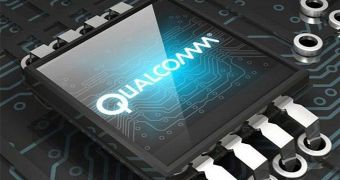A new report from Taiwan says Apple has plans to develop its own baseband processor (also known as baseband radio processor, BP, or BBP), a chip housed in a network interface that manages all the radio functions of a smartphone, including Wi-Fi and/or Bluetooth, using its own RAM and firmware.
The sometimes-reliable DigiTimes cites the usual industry sources as saying that “Apple reportedly plans to form a R&D team to develop baseband processors for use in iPhones to be released in 2015 and will place the baseband chip orders with Samsung Electronics and Globalfoundries.”
The move would impact Qualcomm, which designs the current baseband chips for iPhone and iPad, and Taiwan Semiconductor Manufacturing company (TSMC), which produces the chips and then sends them to be incorporated into said iDevices.
Some sources suggested that “Apple may develop SoC chips that will integrate application processors and baseband chips,” though other sources noted that “it is more likely that Apple will continue to use discrete baseband chips,” according to the report. In any case, the company seems determined to take matters into its own hands and reduce its reliance on third-party vendors, like Qualcomm, which holds 50% share in this industry.
The Apple-designed chips are on track to be deployed in 2015, or around the time an upgraded iPhone 6S would be launched, if the company’s bi-annual S-upgrade trend stays in place.
There are various advantages of designing your own chips, as seen in the A-series processors that emerged in 2010 and have become as powerful as desktop processors, leading to speculation that Apple might one day build MacBooks around these chips, ditching Intel in the process.
One of the biggest advantages includes power optimization, which greatly improves battery life. Another is processing speed, and yet another is memory optimization, which improved performance on all counts. The Cupertino company would also be able to cut some expenses.
Apple is known to prefer producing as much of its hardware as possible, and it has even purchased the services of GT Advanced to build copious amounts of sapphire for one or more upcoming products. The Mac maker is in the final stages of building a massive sapphire cooking plant in Mesa, Arizona.
Some believe Apple is returning to the double-sided glass design with its iPhone 6. Wanting to prevent accidental damage, a common occurrence with the all-glass iPhone 4 and iPhone 4S, the sapphire-plated iPhone 6 would theoretically be more scratch resistant and less prone to breaking.

 14 DAY TRIAL //
14 DAY TRIAL //